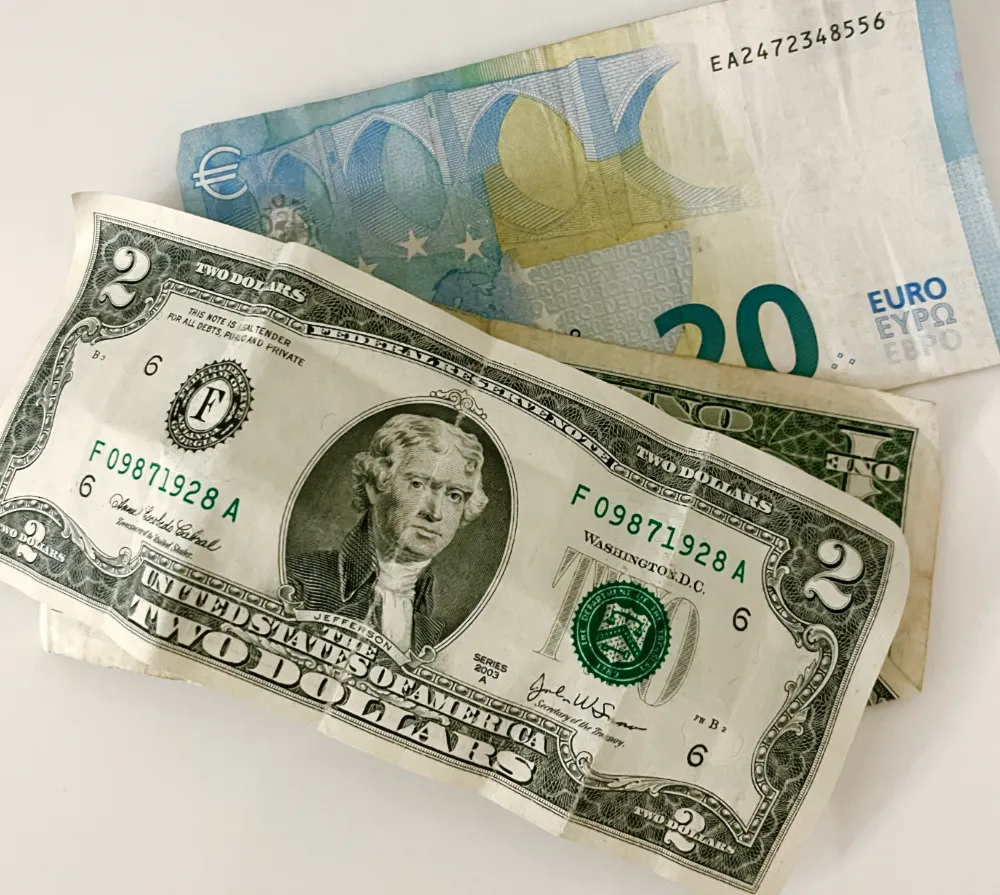Should I pay in Euros or Dollars in Europe?
Written by Nadia Podrabinek
Hello, my name is Nadia. I usually write about traveling (there are so many places to fit all the lifestyles), relocation, and living in a foreign country (adapting to a different culture). My travels stretch beyond Spain, with journeys to the US, Italy, Norway, Portugal, and France. Relocating to Spain in 2018, I lived in cities from Barcelona to Madrid, currently calling Valencia home. Follow me on Twitter, Facebook, Instagram, or LinkedIn! ... show more

If you use a US credit card in France, Italy, Spain, or another European country, you may be wondering whether to pay in euros or dollars on an American credit card.
The short answer is: Always pay in the local currency (Euros), which allows your bank to set the exchange rate, and it will always be a better option.
If you choose to pay in dollars, you get the worst exchange rate from the merchant. Why allow someone else to set the exchange rate?
The same applies to cash withdrawals from bank terminals. They will always ask for “euros or dollars.” You will see the amount in the terminal is always more in dollars, and that is because the exchange rate is set by the payment processor (and not your bank).
Key takeaways on paying with a credit card while traveling in Europe:
- Never accept the exchange rate the restaurant or any other vendor offers. Pay in local currency.
- In hotels in Europe, you should pay in Euros too.
- Always have Euros with you. You never know when the card will not work, and it happens.
- Get a credit card that doesn’t charge an exchange fee. For example, if you use Capital One, you may pay in dollars as the exchange rate is the same as the euro.
- You should never tip in US dollars.
- For a long-term stay, consider having a local bank account.
See also:
What people say on Reddit
Just checked and it seems to be true, on larger purchases buying with USD is a a decent bit cheaper than EUR.
Take the scorpius for example. With 21% tax it’s 242.00 USD, which using paypals exchange rate is 207.31 EUR. In the RSI store it would be 220.22 EUR, so you save yourself 13 euros.
Eraywen
I think it is some sort of law thing that in the EU they have to charge in Euro instead of USD.
Castigador82
The reason the price in Euro is a little bit more expensive it that probably CIG has to calculate for the costs of converting the Euros back to USD.
Local currency is king. You’ll end up losing/spending more with foreign currency. But if you were to carry one of the two USD will be more widely accepted without confusion.
souvlakimchi
Stick to the ATMs at banks vs in stores. Many bank ATMs I’ve seen in Europe don’t charge fees (of course your bank will), but most machines in stores do.
Another reason is you’ll get a better exchange rate from the ATM/your bank than you would exchanging dollars at exchange stores.
When paying for something with your card always pay in the local currency rather than dollars. Paying in dollars gets you a much worse exchange rate than letting the bank do the conversion.
bjb13

4 replies on “Should I pay in Euros or Dollars in Europe?”
I’ve read this guidance many times, but I get immediate alerts from my Chase card for international purchases and it’s almost ALWAYS more in USD than the USD amount listed at the point of sale. For example, I’m at the airport buying lunch right now. The machine offers $12.49 USD or xxx euro (I forgot the total). I picked Euro. I then got my Chase alert that it’s $13.02. I see this a lot. Should I be choosing the USD option then? Maybe it’s something with my Chase card?
Thank you so much for giving this important information. It is great.
How do you book travel in euros? Please advise – thank you!
They will ask you how you want to pay in Euros or your currency back home. Choose euros